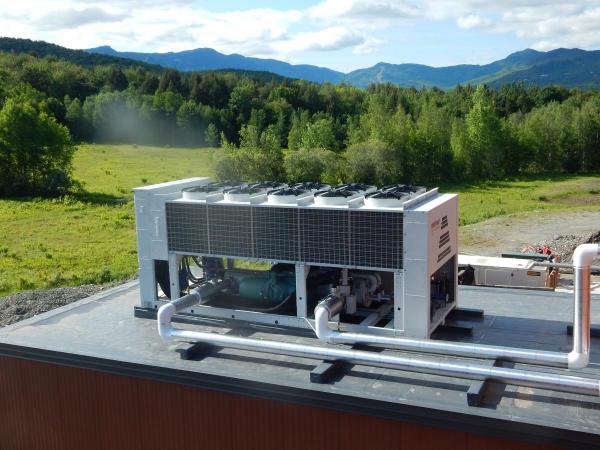Free Air Cooling: Efficient Strategy to Complement Cooling in Mission-Critical Facilities
Today, thermal management of critical facilities is a constant challenge due to the need to maintain optimal availability and performance of equipment—such as data centers, telecommunications rooms, and server rooms—which represents an ongoing challenge and a significant operational cost.
Traditional cooling systems consume a massive amount of energy, impacting both the budget and the carbon footprint of companies.
But what if you could harness an unlimited and free resource to keep your equipment at the ideal temperature? This is where the Free Air Cooling.
What is Free Air Cooling?
Free Air Cooling is a cooling strategy that uses naturally cooler outside air to cool indoor spaces when weather conditions allow.
Instead of relying solely on energy-intensive refrigeration compressors (like those in conventional air conditioners), this system brings filtered outside air directly into the facility, pushing out the hot indoor air.
When the outside temperature is low enough, Free Air Cooling systems can partially or fully handle the thermal load, drastically reducing or even eliminating the need to run expensive compressors.
Key Benefits of Free Air Cooling
Implementing Free Air Cooling solutions offers a range of transformative advantages for any critical facility:
- Energy Efficiency and Cost Savings: This is the most obvious benefit. By relying less on compressors, electricity consumption is drastically reduced, resulting in lower energy bills and a quick return on investment.
- Sustainability and Carbon Footprint Reduction: By reducing energy consumption, companies actively contribute to lowering CO2 emissions and operate more environmentally friendly, aligning with sustainability goals.
- Increased System Reliability: By easing the workload on traditional cooling systems, component wear is reduced, extending their lifespan and lowering the risk of failures.
- Reduced Maintenance: By operating less frequently, compression equipment requires less maintenance, optimizing resources and technical staff time.
- Extended Lifespan of IT Equipment: Maintaining a more stable and controlled ambient temperature helps prevent overheating of servers and other equipment, extending their operation and performance.
- Flexibility and Scalability: Free Air Cooling systems can be designed to work independently or as a complement to existing systems, adapting to the infrastructure’s growth needs.
How Does It Work? (Basic Principle)
In its simplest form, a Free Air Cooling system consists of:
- Air Intake Unit: Equipped with high-efficiency filters to ensure only clean air enters the facility.
- Fans: That push outside air into the room.
- Sensors and Intelligent Controls: That constantly monitor both outdoor and indoor temperature and humidity, deciding when it’s optimal to use free air and when mechanical cooling needs to be activated or supplemented.
- Air Exhaust Unit: To expel the hot air from the interior.
There are variants such as Direct Free Cooling (outside air is introduced directly) and Indirect Free Cooling (where a heat exchanger transfers energy without mixing airflows), each with its own applications and advantages.
A Cooler and More Efficient Future
Free Air Cooling is not just a trend, it is an effective strategy for cooling our most critical facilities.
It represents a step forward toward operational efficiency, environmental sustainability, and infrastructure resilience.
If you want to optimize your data center’s performance, reduce costs, and contribute to a greener future, Free Air Cooling is an option to consider as part of a comprehensive cooling strategy.
Consider integrating this technology into your cooling strategy and experience the benefits of smart, natural cooling.



